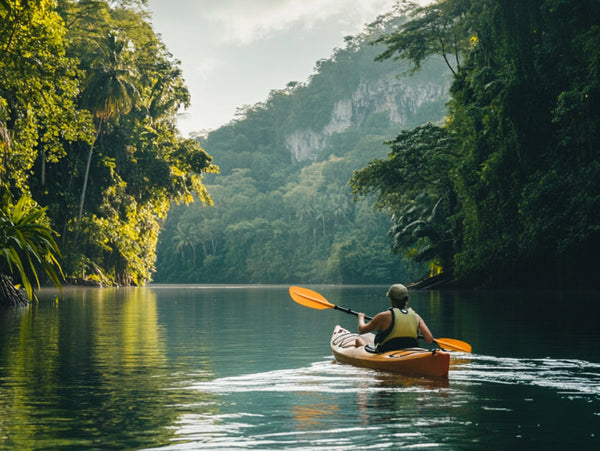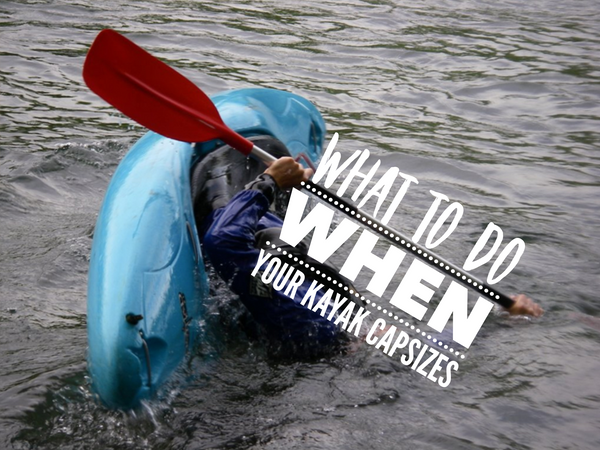Top 5 Tips: Getting Started With Kayaking

OK. So you’ve finally decided to join the kayaking craze and see what all the excitement is about!
Congratulations! You’ve taken your first step into an amazing, growing community of folks who know how to have fun while connecting with wild places outdoors, socializing safely, and getting great exercise.
The number of people who own a recreational kayak since the pandemic began is now about twice what it was before – and climbing.
There’s more to this sport than simply shoving off into the waves, though.
Where to begin? Safety should always be your first consideration. These tips will help get you started.
1. Purchase the right kayak
Before you plunk down a couple of hundred dollars – or much more – on a new kayak, consider where you’ll be paddling most of the time. Will you need to use your car or truck to transport your kayak and gear? Or, will you be able to carry it to the water manually or on a dolly? Will you have someone to lend a hand when you need to lift your boat? The answers here will guide you in deciding how heavy your boat should be, as well as what you might need in order to transport and store it.
2. Select a good quality paddle that fits your height, boat and style preferences
Aside from your kayak, your paddle has the biggest impact on your paddling performance. Even on a short outing, you’ll do thousands of strokes; the right paddle will extend your endurance considerably.
There are a few schools of thought on how long your paddle should be. Usually, the perfect length is a function of your height, the width of your kayak and your preferred paddling technique (deep strokes or wider sweeps). Generally, the wider your boat, the longer your paddle should be. Standard lengths range from 210 centimeters to 250 cms. Lightweight materials such as carbon fiber improve performance, but make for a pricier paddle. Your paddle’s blade size, shape and shaft configuration (bent or straight, feathered or matched blades) all affect its overall efficiency in the water. Consult with a kayaking paddle dealer to determine what’s best for you.

3. Select a high quality, well-fitting personal flotation device (PFD)
This is the single most important piece of gear you will own. Wear it every time you get out onto the water. No exceptions! There are plenty of styles from which to choose so you can look cool and stylish while also being safe!
4. Position your hands correctly on your paddle
Check three things when you hold your paddle in front of your chest:
✔️ Your large knuckles should be pointed up and your blades perpendicular to the surface of the ground.
✔️ The shorter side of each blade should be on the bottom.
✔️ The concave side of each blade should be facing you (unless your blades are flat, in which case this does not apply).
Place your hands equal distances from the center of the paddle and relax your grip. You’re now ready to paddle.
5. Learn proper paddling technique
The basic strokes are Forward, Reverse, Sweep and Draw.
With all these strokes, it is important to learn how to use your torso for maximum power with each stroke. Many beginners start out paddling by using only their shoulders. Not only is this inefficient, but it puts wear and tear on your body.
Instead, when you paddle forward, especially, twist from your waist when reaching forward to initiate the stroke. Then, keeping your arms straight for most of the stroke, untwist your torso, using the strength of your abdomen to propel your boat. This may take some practice, but it’s an excellent technique to learn.
Naturally, there is much more to learn about learning this fun and exciting sport. We recommend you search the many valuable kayaking tutorials found online. You can also seek out a local kayaking club and learn from others there. The most instructive moments, though, will be those you experience while actually on the water.
So, get on out there today! The pandemic has brought about many changes, but the feeling of joy that safe outdoor recreation creates will always remain the same.
Spread The Word & Pin It 😊
Leave a comment
Comments will be approved before showing up.
Also in Blog

How to Choose the Right Kayak Anchor
Choosing the right kayak anchor can make all the difference when it comes to staying steady on the water. This guide walks you through everything you need to know about selecting the perfect folding kayak anchor

What To Do When Your Kayak Capsizes
Although kayaks are designed for stability no matter the conditions, accidents happen and knowing what to do can help you avoid an unpleasant experience. Preparedness and technique are key components to controlling a sometimes scary situation.


